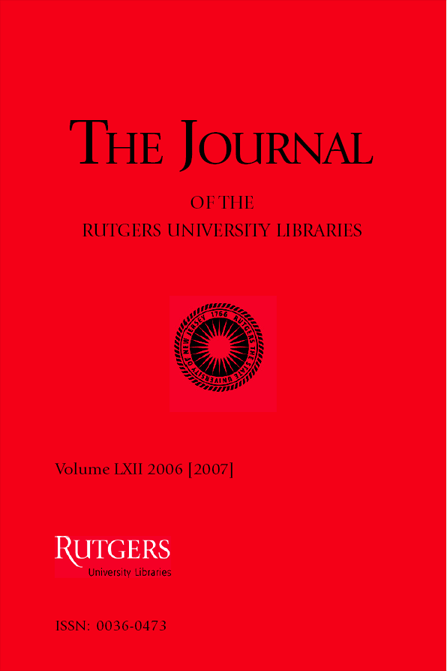The Doctor as Weatherman: Medical Topography in Nineteenth-Century New Jersey
DOI:
https://doi.org/10.14713/jrul.v62i1.784Keywords:
19th Century, New Jersey, NJ, Physicians, MedicineAbstract
Intellectually active nineteenth-century New Jersey physicians participated in a national (and international) research endeavor known as medical meteorology, medical topography, or medical climatology. Close personal observation of weather and topography was a scientific endeavor that made New Jersey practitioners, often isolated in rural or town practice, feel part of a new scientific spirit in medicine. Investigations of climate and soil conditions helped organize and explain, however imperfectly, the confusing array of fevers and epidemics that constituted much of daily practice. Physicians communicated their local weather and soil conditions to colleagues in county and state medical societies in an attempt to correlate their observations with prevailing local disease patterns. Many were disappointed to find that medical topography often failed to explain or predict local disease outbreaks. For several decades after the Civil War, medical topography resonated in complex ways with mid- and late-nineteenth-century advances in sanitation and germ theory. By the 1880s, routine meteorological observations disappeared from medical journals, eclipsed by the rising hegemony of the laboratory in explaining health and disease.Downloads
Published
2007-11-02
Issue
Section
Articles
License
Copyright for articles published in this journal is retained by the authors, with first publication rights granted to the journal. By virtue of their appearance in this open access journal, articles are free to use, with proper attribution, in educational and other non-commercial settings. The author has agreed to the journal author's agreement.
As of Vol 50, No 2 (1988), all articles in this journal are licensed under aCreative Commons Attribution-Noncommercial-NoDerivs 4.0 United States License




